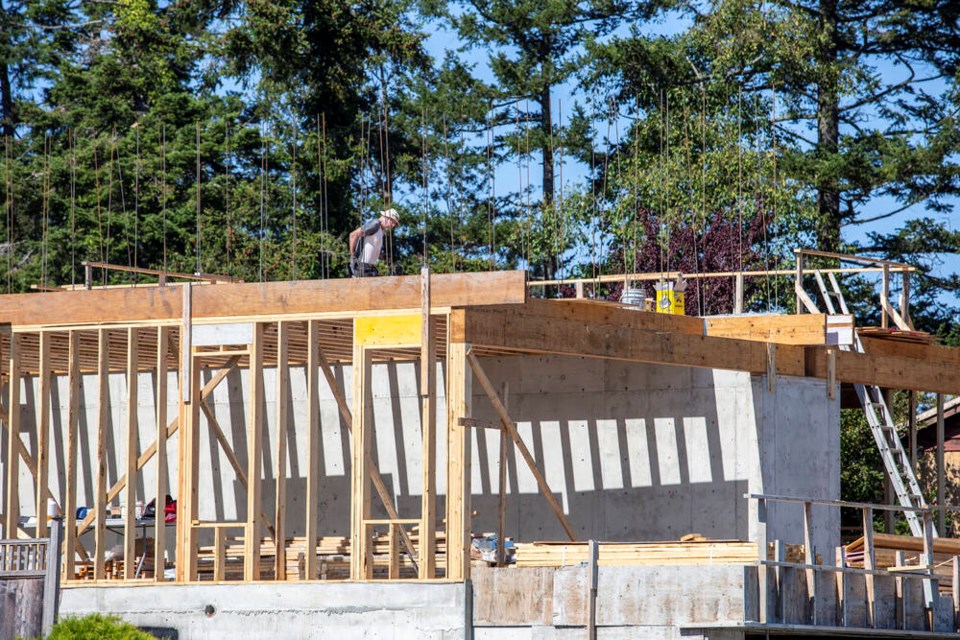Despite pandemic challenges, supply-chain concerns, a labour shortage and the ongoing tug-of-war with municipalities over zoning and costs, homebuilders in Greater Victoria could still have another record year.
Canada Mortgage and Housing Corp. said the region has seen 3,488 new homes started this year, thanks in large part to a surge of condominiums and rental apartments breaking ground in Victoria.
“I think we will be bumping up close to 4,000 units for the year,” said Casey Edge, executive director of the Victoria Residential Homebuilders’ Association. “The reality is we have been averaging about 2,000 units a year for the longest time and we’ve nearly doubled that and it still won’t be enough.
“That tells you something about population growth in this region.”
The record for the number of new homes started in the region is 4,439 set in 1976, while the region did hit 4,273 in 2018. Last year the region saw 3,209 new homes started and 3,499 in 2019.
CMHC said the pace of housing starts slowed across the country in September with some economists suggesting it was in line with expectations due to a tight labour market and difficulty in accessing materials.
But in Greater Victoria, construction crews were working flat out in September, Edge said. Work started on 416 new homes last month, more than double the 193 started in September last year.
Total housing starts this year are also well ahead of last year’s pace with 3,488 year-to-date versus 2,347 through the same period last year.
“But we are still not building enough supply to keep up with demand,” said Edge. That has led to higher home prices — the median price of a single-family home in the region is now over $1 million, according to the Victoria Real Estate Board.
“We were in a hole at the start of the pandemic and that just set us back even further,” Edge said. While supply and labour are concerns here as they are everywhere else, they are not the reason for the supply shortage, he said.
That falls squarely at the door of the region’s municipalities. “We need to take steps to take care of the obstruction at the municipal level,” he said. “The challenges of supply are there.”
Edge said various housing-needs reports and even the province’s own Opening Doors report on housing supply called out the “slow and unpredictable pace at which new housing … receives regulatory approval from government authorities.”
Edge said those delays, needless time-consuming hearings and development cost charges and amenity fees, which the province’s Opening Doors report noted are often unpredictable and lack transparency, have effectively discouraged homebuilding.
The problem of municipalities holding up homebuilding is well illustrated by North Saanich, where a small group has organized to obstruct even a review of the Official Community Plan, he said. “We’re not even talking about a specific project that they are against. And municipal councils too often run into these groups that have been created for the express purpose of opposing new housing.”



